#bokashi bucket
Text
ADHD hack for home composting: Bokashi buckets!
I care a lot about home composting (and it makes my regular bin waaaay less gross) but I find it really hard to empty my compost caddy regularly and it tends to get naaasty with flies and maggots and mould
Enter: ✨ the bokashi bucket ✨

A bokashi bucket uses anaerobic bacteria to ferment all kinds of food waste, before you bury it to finish the composting process. It's low-odour, can live in your kitchen, and, most importantly, doesn't need to be emptied often
All you have to do is put in your scraps, spray or sprinkle some starter culture, and then seal the lid tightly
Once you've filled your bucket, you leave it for two weeks (or longer) before either burying the contents or putting them in a traditional compost bin. During this time, you drain off the liquid every so often (and you can collect it to use as starter for your next bucket!)
It helps to have a second bucket so that you have one to use while the other is busy fermenting
I bought the 7L one from Urban Composter, but there are different ones out there and you can even make your own. Urban Composter also does a starter kit with two bins and some starter liquid. You can also find dried starter which has a similar texture to fine sawdust
You can also make your own starter culture quite easily. I'll put what I did under a read-more cause it's some real hyperfixation shit
For my starter culture I wanted to capture some Rhodopseudomonas palustris bacteria, which are pretty unique in that they can use four different modes of metabolism, two photosynthetic and two chemosynthetic. So I had to first get one kind of bacterial culture going based off something I knew would probably have the right bacteria, and then put it in an environment where only the bacteria that can use the other kind of metabolism will survive.
I used a two-pronged approach
For chemosynthesis, I made a fucked up sauerkraut by mincing together cabbage, salt, brown sugar, and raw brown rice, with some rain water, and putting it in a sealed jar in a dark place. (The cabbage and the brown rice contain the bacteria.) If you do this, remember to vent the jar every day to let out the built-up gases. It will smell funky and like fermentation.

For photosynthesis, I put some dirt and rain water in a sealed jar in the sun. This should smell inoffensive.
It's important to use rain water or distilled water, because you don't want the chlorine in your tap water killing your bacteria.
Then, once it looked like the chemosynthesis jar had eaten up all of the sugar (i.e. it had stopped producing so many bubbles) and the photosynthesis jar had some green visible, I swapped them around. I put the kraut jar in the sun, and added some sugar to the dirt jar and put it in a dark cupboard. From here, the dirt jar will start to smell funky too, as it starts to ferment the sugar.
Then, after they'd done some more bubbling away, I poured off some of the liquid and have been using it as my starter culture, to great success.
#home composting#compost#composting#adhd#adhd tips#adhd hacks#bokashi bucket#bokashi starter#diy#gardening#original post#food waste#zero waste#sustainable living#swooflia posts
1 note
·
View note
Text
Supporting Your Plants for Cheap
This is my fifth post in a series I'll be making on how to increase biodiversity on a budget! I’m not an expert--just an enthusiast--but I hope something you find here helps!
Once you start gardening, you’ll find a lot of things go into it, and it can be a bit daunting to think about--especially if you’re trying to keep things low-cost. Fortunately, it doesn’t have to be as hard--or as expensive--as it initially appears.
Composting
There’s several different ways to compost, any of which are helpful indirecting food waste and nutrients out of landfills and into your soil--which in and of itself can help increase biodiversity by making the space more livable for microorganisms and insects, which then cycles around to the rest of the habitat.
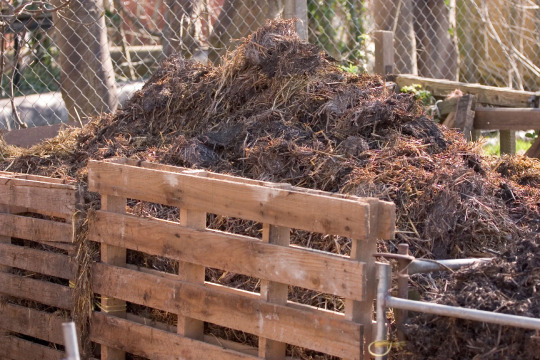
The classic one you see is hot composting. Most of the time, when I see hot composting set ups online, or hear people talking about them, it’s like listening to a wizard cast an intricate spell and prattle on about ratios and temperatures and special ingredients while standing over a detailed self-built setup made of the finest wood money can buy. Fortunately, it doesn’t have to be complicated. First off, there’s lots of ways to make compost bins--some can be more expensive than others, but there’s definitely options asides from buying pre-made tumblers or getting an engineering degree. I’ve seen people use metal trash cans dug into the ground, make compost pile setups out of old pallets, or just pile stuff up and leave it. While using different ratios of certain items can help them decompose faster, it’s ultimately not something you need to worry about a lot. If it can break down, it’ll break down--it just might take awhile. Composting this way can also help provide habitat--some insects like bumblebees have been known to make nests in compost heaps. In addition, it provides a robust ecosystem for decomposers like worms and other organisms, and bats and birds will be attracted to open-top piles to eat flying bugs that live off the compost. Amphibians enjoy them for humidity, warmth, and feasting on insects. Do note that sometimes snakes may also rest in and lay eggs in compost heaps, so be careful when turning them.
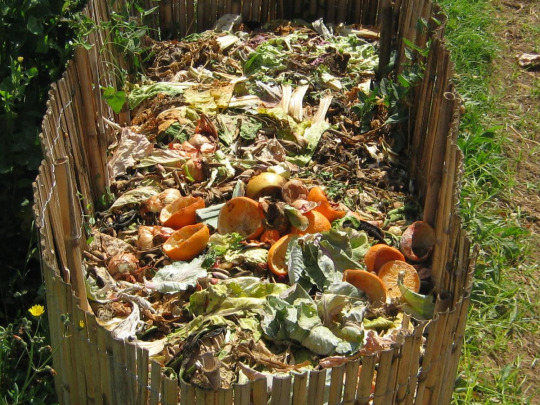
Do note, though, that if your compost pile looks like that you're getting roaches and rats and raccoons out of your goddamn mind. Bury the food scraps.
Personally, when I compost, I use a worm bin--they’re a fantastic option for limited space and limiting smells. I keep mine outside in a big rubbermaid tote with holes drilled into the bottom, sides, and lid. I put a layer or two of weed block on the inside, so it’s still able to drain but keeps the worms from trying to escape during rainy days. There is an initial cost of buying the worms, getting enough bedding materials, and getting a new bin if you don’t have an old one suitable for use. But with occasional feeding, it should sustain itself and provide valuable worm castings that can be used in the garden. Please do note, however, that earthworms are considered invasive in some places.

Look at that worm bin-y goodness. This is a pic of my bin, from earlier this month!
Though I’ve never done it, I’ve heard of people having good results with bokashi composting--a method that’s done in a bucket, and is relatively easy to do indoors.

Once you start a composting system, keeping it stockpiled with organic material can become pretty easy for cheap. In general, if it comes from a plant, it’s safe to use. It’s also a good idea to avoid putting already-cooked things in a pile, as salts and sauces can kill beneficial bacteria in the compost while also attracting animals. Adding meat is also generally avoided to not attract animals. But below are some things that I’ve put in my worm bin quick, easy, and cheaply; or things I’ve seen friends put in their compost piles.
Cooking scraps/snack leftovers--things like cut up bell peppers, the ends of tomatoes, strawberry tops, apple cores, watermelon rinds, coffee grounds, and orange peels are amassed somewhat quickly in my house--my dad likes to cook. Around holidays like Thanksgiving and Christmas? Corn husks, potato peels, sweet potato fibers, leftover greens and other trimmings are a feast for compost piles and worm bins.
Vegetables and Stuff that went bad in the fridge/pantry--we’re constantly victims of the ‘forgot it was there’ conundrum. Fridge cleanouts are great times to decide what can be tossed to the compost--moldy bell peppers, spotty celery, questionable carrots, onion halves, old eggs, bagged salads, and stale/moldy bread have all been tossed into the pile before!
Grass clippings--though my worms don’t like grass clippings, they’re still great material for a classic hot compost set-up!
Fallen leaves--another classic addition to a hot compost pile. Some friends keep them stocked up and stored for later use.
Plant trimmings--what is plant clean up if not compost material? I’ve put cleaned-out sunflower heads and stalks in my worm bin, and they decomposed after about two months. If you get blossom end rot on your tomatoes or peppers, they’re still fair game for the bin as well!
Shredded mail--just make sure to not put in the thin plastic that covers the address section on some envelopes. Otherwise? As long as the paper isn’t glossy, it should be great for a bin or pile! Shredded paper or cardboard also makes great bedding for worm bins. Put those Amazon boxes to good use!
Pumpkins! Snag your neighbor’s halloween pumpkins in November and toss them in my compost! Last year my dad went around the cul-de-sac and nabbed all of the post-halloween pumpkins, the worms loved it.
Christmas tree needles--can’t confirm I’ve tried this, but it seems like it would work.
Mulch
Mulch is an excellent way to keep your soil moist, while also beginning and continuing to improve soil conditions as it breaks down into organic matter. You’ll have to water less, and it’ll prevent/slow down the growth of unwanted weeds (which is always the final straw to gardening for me, I get so overwhelmed I just stop going outside). Win-win situation, right? Except stepping into a Home Depot and finding mulch being sold for five dollars per square foot and knowing you have to cover a whole garden with it all can add up… pretty quickly, to say the least.
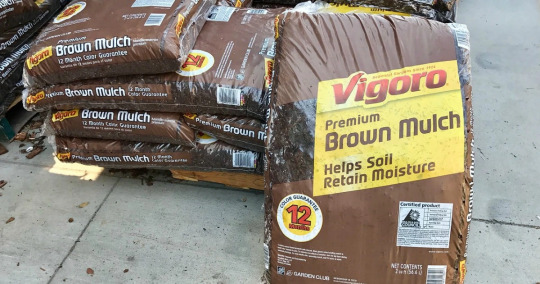
Fortunately, there are a few solutions to this, and likely from your own backyard!
Grass clippings are the first that come to mind. If you’re mowing your lawn, or have neighbors who are, collecting the clippings and spreading them over your soil is a cheap and easy option for some quick mulch. It’ll be very nitrogen-heavy, so keep that in mind, but it’ll still prevent weeds, retain moisture, and break down into organic material over the course of a few months. Do try to not use grass clippings you know are treated with pesticides, since the aim is to use this mulch to help increase your biodiversity, and having insects around plays a big role in that.

Fallen leaves are the next that comes to mind. If you’ve got a tree in your yard, or in your neighborhood, then you or someone around you knows the neverending avalanche of leaves or pine needles that drop come fall. As mentioned before, they can be used to make brush piles for creatures, or added into compost, but they have a fantastic third use as mulch. Add them on top of your beds!
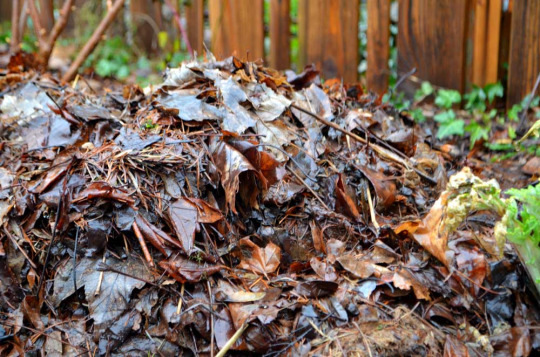
Want free wood mulch? A program called Chip Drop might be the best solution for you! They team up with arborists to find cheap drop sites for shredded wood, logs, etc. that are produced as they maintain trees! If any local arborists tied to the program are operating in your area, instead of paying to dump the resulting mulch at a landfill or some other dumpside, they’ll simply dump it at your place! Now, you won’t be able to control when the mulch gets dropped--I’ve heard of people coming home from work one day to find a chip drop in their driveway. But… free mulch!
Want wood chips but not a whole truck load? If an arborist is working in your area, and you can muster the courage, its worth a shot to ask! One time someone in my neighborhood was getting a tree removed, so my Dad and I parked near their car with a tarp in the trunk, some shovels, and an old storage bin. We approached nicely and asked if we could have some chips, and they were totally cool with it! At that point, how much you get depends on how big your trunk space is, and how many times you’re willing to ferry mulch back and forth out of your car so you can go back for more. But it is an option! Alternatively, you can ask them to dump the whole load in front of your house, but at least you’ll know when and where it’s happening!
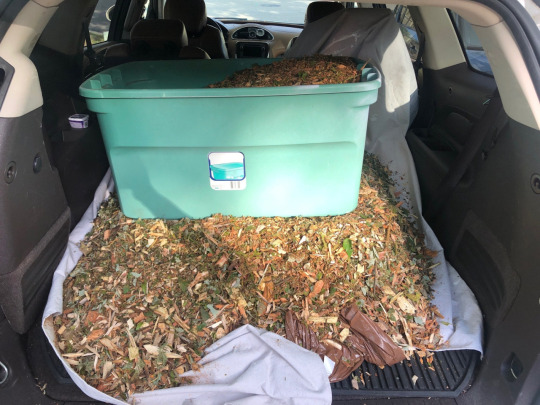
Trellises
Many plants need, or will appreciate, some kind of climbing structure. But trellises aren’t often cheap to find. To that, I say--we’ll create our own!

One popular option is to grow taller plants, and then plant climbing species are few weeks/years later so they’ll climb the taller plants! I’ve planted passion vine near a tree in my garden for it to climb, and I’ve seen people do similar concepts with sunflowers, corn, and other such plants! Sunflower stalks can provide support even after they’ve been cut back.
A combination of wood, some stakes, some nails, and some string can create a great frame trellis that can be used for beans, tomatoes, vines, etc--so I’m sure if could be put to good use for native climbers, especially since my dad’s used this structure for passion vines before. You may have to replace the string every year, but most of the time, the string is compostable anyways!
This may take a bit more setup and have a more upfront cost, but creating a trellis out of cattle panels makes a durable structure that can support all kinds of vining plants!

Of course, there’s always the easy alternative of simply letting plants climb along your fence! This is especially easy if you have a chain link fence, but wooden fences are plenty suitable for some species as well! I’ve seen passion vines do great growing along chain link fences as supports, and one of my favorite sights as a kid was always seeing bushels of trumpet vines growing up and over fences on the drive home.
Why are we worrying about trellises? Creatures are attracted to diverse landscapes with a variety of plants within them, so having a few climbers can be a great way to attract more wildlife! I know some plants in my area that pollinators are attracted to, or even rely on as host plants, are climbers that can get upwards of 15 feet tall, and will climb any surface you give them. A trellis provides you a great place to put extremely beneficial plants.
That's the end of this post! My next post is gonna be about how different 'kinds' of plants can all be beneficial in a biodiversity standpoint. Until then, I hope this advice was helpful! Feel free to reply with any questions, your success stories, or anything you think I may have forgotten to add in!
#biodiversity#solarpunk#gardening#outdoor gardening#composting#mulch#trellis#budget gardening#cheap gardening#ani rambles#out of queue#the biodiversity saga#i remember junior year of college me and my friends considered doing a cattle panel trellis#but then we couldn't figure out where to buy cattle panel#apparently the answer is 'tractor/farmer supply companies'#also so anyone reading these tags knows what took me 5+ years to learn#CATTLE PANEL DOESNT COME IN ROLLS IT COMES IN LENGTHS#all this time I was like 'man i wanna make a cattle panel trellis but it comes in like 40 foot lengths and i dont need that much'#and all my gardening homies were confused because theyve been getting it in lengths THIS WHOLE TIME#I WAS LOOKING AT FUCKIN ROLLED FENCING#i actually dont think any of the big box stores by me even fuckin sell cattle panel but thats beside the point#you can get it delivered though#(Delivered to the store for pickup i think)#someday i want a cattle panel trellis with like moonflowers or trumpet vine just a BURST of color and life
290 notes
·
View notes
Text

Please observe my beautiful bokashi bucket, made with love, silver sharpies, spray paint, and buckets from Home Depot. Bokashi composting lets you compost way more than usual compost systems do, including animal products and citrus. I'm excited to see how the first batch goes!
5 notes
·
View notes
Text
Bokashi soil maker - the results.
Reecently I posted about an experiment in using finished Bokashi compost to boost cheap potting mix. It’s been a couple of weeks longer than I originally planned before checking it but, you know me…
No excessive odour – the potting mix, not the gardener!.
From the mixed bucket.
From the layered bucket.
This experiment was the first in a series and this one was mostly to see if the finished…

View On WordPress
2 notes
·
View notes
Note
Saw in your Martin tag that you have a background in farming and ecology in real life… as a city person who wants to learn more about the nature around me and do more to work with my hands than only cooking… how would you suggest I start? The rare occasions I walk to my local park make me feel alive as soon as I smell the grass and trees. I’ve grown green onions in a jar from cuttings but that’s about the extent of my engagement with gardening. I want MORE, it helps me get out of my head and the intangibility of sedentary mental life for a while
I would start with a regional guide to medicinal plants, or mosses, or wildflowers or trees or anything that piques your interest... but it helps to narrow it down to a single category so the scope isn't overwhelming. I also really like The Natural History of Vacant Lots if you can get your hands on a copy. Overcoming plant blindness makes me feel more connected to the land on which I live.
People often suggest growing food in pots if you have a south-facing window. I've never had much luck but it's possible. There are all kinds of clever space-saving ways people do this: suction cup planters, windowboxes, hanging planters made of plastic bottles.... Herbs are a good first starting point, and it's nice to go trim some fresh parsley for dinner. Citrus trees make nice houseplants too, and they will fruit indoors, but require a little more maintenance.
Composting is fun. Not sure what your living situation is, but worm bins and bokashi buckets are apartment-friendly. It can go on houseplants but if you wind up with more than you need, post on a community forum and someone will eagerly take it, I'll bet!
The Urban Homestead is a neat book designed with city-dwellers in mind. Some of the projects are huge undertakings, semi-illegal, and only advisable if you own your home, but it's got stuff to get ideas fermenting.
Lastly, if you've got a willing friend with a yard, or a community garden, I'm a big advocate of perennial food plants. I don't like taking care of finicky plants and I hate growing annuals from seed and am fundamentally a very lazy, Darwinist gardener, lol. We get a lot of rain here so all I have to do is like, periodically add a layer of mulch to my perennial bed.
5 notes
·
View notes
Note
allotment project for the upcoming week: dig a 50 cm deep trench to bury a bucket of bokashi compost in (it has to be that deep to avoid animals getting to it). digging. and digging. and digging. think about the beans that will thrive here next summer. and dig some more.
now that is a good working spell
2 notes
·
View notes
Text
What is Bokashi Composting?
Bokashi is an anaerobic process that uses EM (effective microorganisms) to ferment food scraps and turn them into ready-to-use garden fertilizer. The EM helps break down the kitchen wastes and prevents them from rotting and stinking. Bokashi differs from traditional composting in that it is a fermentation process and not a decomposition process. The beauty of Bokashi is that it can be done right in your kitchen and doesn’t require a big pile of yard scraps in a compost bin outdoors.
How bokashi composting works
The traditional composting process requires air, water, moisture, and regular stirring to speed decomposition (along with help from aerobic bacteria). In contrast, the Bokashi process only uses “bokashi bran” and an anaerobic (without oxygen) environment to ferment materials. Bokashi bran is developed from EM and rice or wheat bran mix. When added to food scraps, the fermentation creates a liquid fertilizer and pre-compost materials in just 2-4 weeks.
The Bokashi process is pretty simple: Mix bokashi bran with layers of food scraps and store it in an airtight bokashi bin for around 14 days. Every other day, drain off the leachate, aka “bokashi tea“, from the bokashi bucket to use as liquid fertilizer. By the end of 2 weeks, you’ll have a “pre-compost” fermented mixture that can be used as fertilizer for your garden or added to the compost pile to speed decomposition.
Materials needed for bokashi composting
Bokashi composting only requires a few materials and you can make it right in your kitchen.
Read More
2 notes
·
View notes
Text
The Essential Bokashi Compost Starter Kit
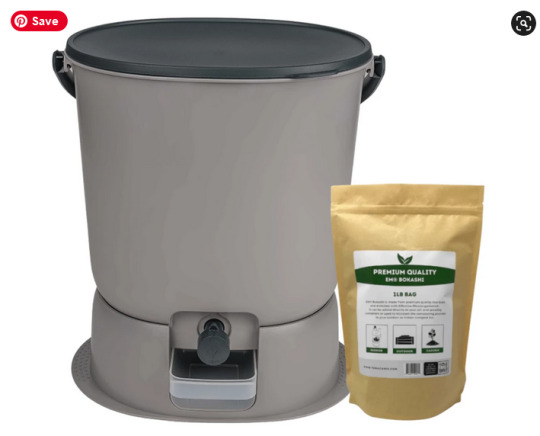
The Essential Bokashi Compost Starter Kit
1 lb bag of EM® Bokashi,
1 or 2, 4.4 gallon compost buckets; airtight lid, draining sieve, presser, dosage container, handle, drain cup, tap, base
A complete guide to bokashi composting.
0 notes
Link
0 notes
Text
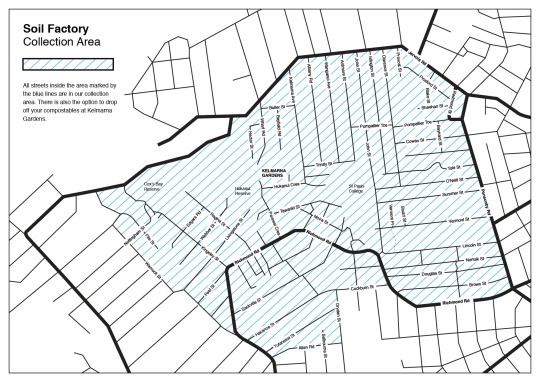


Bokashi bucket is something I could include in a starter pack
0 notes
Text
Meat, Not Mean
Yeah, I get into weird conversations. Like this one:
Me: So, where I'm at is we should eat the rich, basically.
VP: Unless they prove themselves to be demonstrably more useful to the populace alive
Me: And / or unsafe for eating. At which point, there's a composting method that works on mean.
Me: meat, not mean
Me: I don't think the kindness of compostable material has ever been a concern.
27 notes
·
View notes
Text
also what if say i want to compost my avocado stone that ive impatiently attempted to grow roots out of for a total of 48 hours has gone bad a little? should i still compost it?
0 notes
Text
Bokashi Composting
Some of the things I was told about bokashi composting when I started doing it weren’t accurate, and it was a struggle for a while. But I learned a lot after doing it for a year, and it’s actually an awesome composting option for apartments and other small and/or rented spaces.
So here’s Mod J’s Post on Why Apartment-Dwellers Should Do Bokashi Composting, with a few things I wish I’d known starting out.
What is bokashi composting?
Here’s what I understood when I started bokashi composting:
Bokashi composting is a method of composting that uses microorganisms in a powder called “bokashi bran” to speed up the composting process and eliminate the smell. Put your food scraps in the bin and layer with the bran. Once the bin is full, let it sit for two more weeks, and you’ll have good dirt ready for planting.
That’s not entirely accurate. Here’s a more accurate description:
Bokashi composting uses fermentation to turn organic waste into two components: a solid pre-compost and a liquid “bokashi tea.” The tea can be dilluted with water (a 1:100 ratio is recommended because of its high acidity) and used as a fertilizer. The pre-compost can be buried in dirt and within two weeks will become nutrient-rich compost dirt itself.
How does it work?
The bokashi method works by fermentation. Keeping it in an airtight bin allows it to ferment instead of rot, and the “bran” is supposed to help it along. (Sometimes white mold grows on the stuff inside -that’s perfectly fine and normal.) Fermenting breaks down the organic material a lot faster than ordinary composting. You end up with two components: The solid pre-compost and the liquid bokashi tea. The tea needs to be drained from the bin regularly so the excess liquid doesn’t impede the fermentation process, which is why bokashi bins have a spigot at the bottom.
Does it really have no smell?
Yes and no. If the bin or bucket you’re using has a good seal on it, you won’t smell it while the bin is closed. However, the fermenting stuff inside and the liquid that comes off it smell absolutely vile, and you will smell it when you open the bin or drain the liquid.
Do I need to use the bokashi bran?
All the companies selling bokashi stuff say you do and it helps the process along and whatever. But never trust marketing. I’ve done full bins with a lot of the bran, some with a little bran, and some with none at all, and I’ve noticed no difference. You can try the bran and see if it works better for you, but if you don’t have any or don’t want to buy more you don’t have to.
Do I need a specific bokashi bin?
It’s definitely helpful. Bokashi bins are set up with a seal in the top to keep it airtight and seal off any smells, a bottom that tapers down to a spigot for draining off the tea, and a screen to keep the solid stuff from going all the way to the bottom and clogging up the spigot. You could absolutely build your own, but I recommend a similar setup just for ease of use.
What can I put in my bokashi bin?
Anything you would put in regular compost - vegetable scraps, leftovers, eggshells, etc. Moldy food you forgot about in the refrigerator is also great, and since bokashi uses fermentation instead of rotting, even cooked meat can go into the bin. I’ve thrown in everything from paper napkins to whole zucchinis to a compostable toothbrush (although admittedly, that last one took closer to four weeks to fully break down). There’s no need to worry about ratios of anything - the fermentation will do the work for you.
Why use bokashi?
Turn foods scraps into dirt that you can use to grow more food even while living somewhere you can’t have a compost pile. It’s faster than regular compost (a full bucket takes two weeks of fermenting and two weeks of being buried until it’s done), there’s no smell when the lid is closed, and a lot of bins will fit under a kitchen sink. It’s great for apartments, rentals, and small spaces.
The one downside is that it costs a little more to buy a bokashi bin than it does to just throw some old vegetables in a pile. (I got my bin on eBay for about $50, and many of the name-brand ones are more expensive.) But I live in an apartment, and bokashi composting lets me still have the benefits of turning my food waste into good dirt that I can use to grow more food without needing a yard to put in a full compost bin. That makes it worth the investment for me.
- Mod J
778 notes
·
View notes
Text
What do I do with kitchen scraps? #1
Compost
First option, is compost. This could be home composting like a worm farm, compost heap, tumbler, or bokashi bucket. This is generally not always a simple as chuck in the scraps and hope for the best: worm farms do require input of dry materials (like shredded newspaper or straw) and need to be insulated against heat and sun - they must not dry out or get cooked! We drape a damp towel over them in hot weather, and they are in a super shaded spot in the yard. Check out the links above for heaps of handy tips!
#kitchen scraps#food scraps#kitchen#gardening#garden#compost#worm farm#wormfarm#compost heap#worms#permaculture#food waste#foodwaste#eliminate food waste#cooking
5 notes
·
View notes